Australia So Much to See
References Shire of Yilgarn/Southern Cross
Western Australia – Southern Cross
Wikipedia – Yellowdine Roadhouse
The town was initially planned in 1895 as a railway siding along the Coolgardie to Southern Cross railway line that was opened in
1896. Once gold was discovered at Mount Palmer close to Yellowdine in 1934 the government began to develop the siding as a town-site
that was later gazetted in 1935.
The name of the town is believed to be Aboriginal in origin (Yelladine), with ‘dine’
meaning ‘place of’, but the full meaning is unknown.
In more recent decades, Yellowdine was nothing more than a roadhouse
on the Great Eastern Highway. The roadhouse was closed in 2017, then re-opened under new ownership in 2020. The Yellowdine
Roadhouse was destroyed by fire on the 24th December 2023 from suspected arson.
Around 1927 an agricultural experimental farm, known as the Yilgarn State Farm was established at Ghooli, trialling if the area was
suitable for growing wheat. While wheat growing was successful to the west of Southern Cross, heading east received diminishing
rainfall and was considered unsuitable. Land further to the east of Ghooli has not been released for cropping. West of
the line wheat and canola are grown.
Flying over this area, there is a distinct line between what in spring is paddocks of green
and gold, and the dark green of the scrublands as you enter or leave the goldfields region.
There was a school at Ghooli in the 1930s, and remnants of a children’s playground with the frames of swings and a maypole can be
seen adjacent to the old houses.

Karalee Dam was constructed to provide water for steam trains on their way to Kalgoorlie. The site was chosen mainly because of its
granite outcrop – with rain, the outcrop becomes a natural catchment area. C.C. Hunt constructed a well at Karalee
Rocks in the 1860s.
Constructed between 1896 and 1897, its capacity is 10.6 million gallons (just over 48 million litres), being the largest of the railway
dams in this area. The dam is 450 metres above sea level and 7.6 metres in depth. Retaining walls of granite slab, all cut from
the top of the rock and laid by hand, surround the enormous rock catchment. This enables the water to flow off the rock into the dam
via a large semi-circular aqueduct of steel which was hand riveted at each joint. This structure is still in very good condition considering
its age and exposure to natural harsh elements over the years.
I was keen to see this for historical interest, but there was roadworks
on the highway, and the signage I was familiar with was not there. We missed finding the turn to the four kilometre track in
to Karalee Rocks and the camping area, which has flushing toilet, dump point and a tap, utilising water from the dam. We
did not intend staying there overnight, just to have lunch there and a look around. Hence our lunch was late that day.
Commencing September 2023 and working into 2024, some of the external area is having asbestos materials removed. Access
to view the old pumping station will be reduced during these works.
Bushes of Scaevola spinescens were through the fenced
off areas.
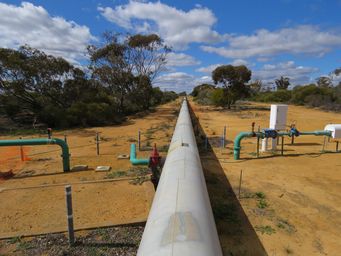
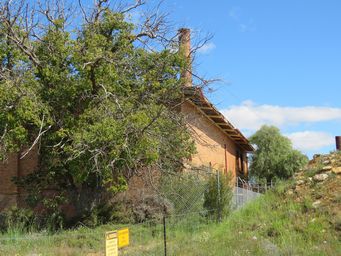
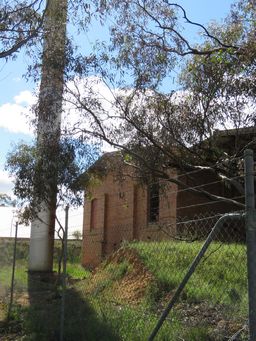
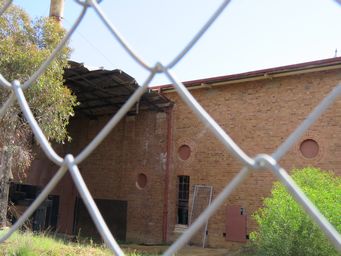
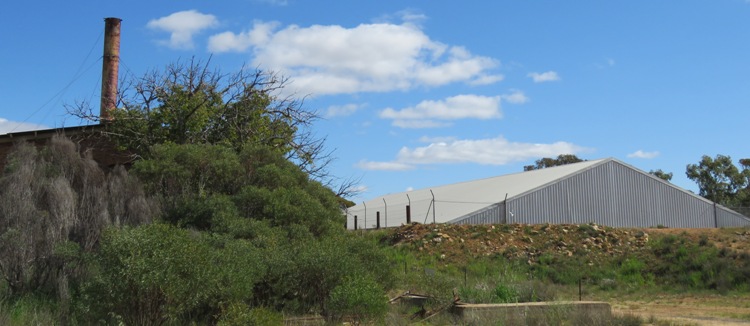
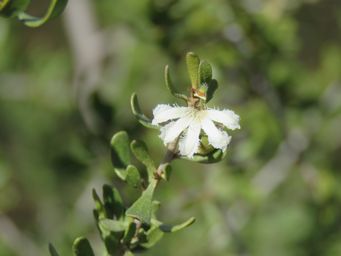
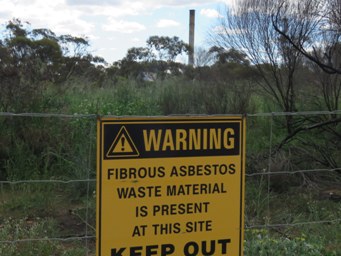
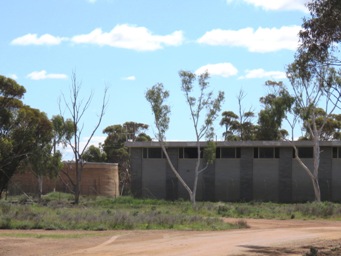
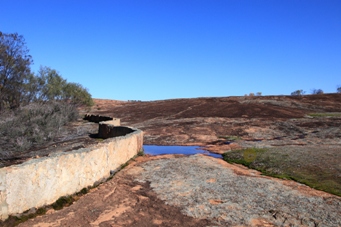
Hunt’s Wells Group consists of the following 16 water sources (of an original total of 25) established by Hunt between 1864-1866 between
York and Kalgoorlie during four separate expeditions aimed at opening up the route and land for agriculture. They then proved
invaluable for the development of the Goldfields.
Youndegin Well (Well No. 1)
Maranobbing Well (Well No. 4)
Dodolokine Well (Well No. 5)
Burrancopping Well (Well
No. 9)
Boodalin Well (Yarkarakine – Bodallin) Well No. 10
Moorine Rock and Well No. 11
Kodjerning Rock and Well No. 13
Koorkoordine Soak
(Well) No 14
Weowanie Rock & Well No. 15
Karalee Reservoir, Rock Catchment and Aqueduct: Hunt’s Dam is present at this site
Quardagin
Well: Well no. 17 (Quardanoolagin and later known as Quardagin, and now Koorarawaylee.)
Horse Rocks Well (Well No. 23)
Stoney Hill Tanks (Well No. 25)
In most cases Charles Hunt and his team found water sources used by Aborigines and/or early settlers and travellers, excavating wells
and lining them with stone. In some cases dams (tanks) were constructed.